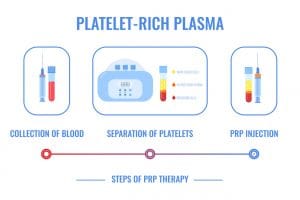12 May Regenerative Medicine’s Impacts in the Fields of Physical Therapy
Regenerative medicine is a new and evolving branch of medicine that seeks to replace different parts of the body like the tissues and organs that have been damaged for different reasons. Regenerative medicine provides an alternative to the traditional clinical strategy and intends to use cellular therapies and tissue engineering to accelerate natural healing. Particularly, regenerative medicine intends to address the problem of aging in humans.

Regenerative medicine provides therapies that are impactful to the field of physical therapy. Generally, it’s useful for improving the functional capacity of a person who has been affected by diseases, trauma, or other issues.
Regenerative medicine has a great impact on physical therapy, as it affects bones, cartilages, muscles, and nerves, which are key elements of physical therapy. Regenerative medicine seeks to ultimately improve the quality of life, which is what physical therapy is also about.
The Future of Physical Therapy for Pain
The sphere of pain management has been evolving and will continue to in the next few years. Following the opioid crisis that’s gone on for the last few years, there’s an urgent need to find another option that can replace the use of opium for pain.
Physical therapy professionals need to leverage the new movement of regenerative medicine to establish an alternative option for the patients experiencing musculoskeletal pain to heal faster, better, and more efficiently. The best opportunity for accomplishing this is to utilize the opportunities that regenerative medicine has brought about.
Regenerative Medicine for Pain
Regenerative medicine such as stem cell therapy in Los Angeles is very useful for treating pain, as it can help to restore the quality of life of patients without a need for major surgery. The treatment options available include:
- Cell therapy
- Platelet-rich plasma therapy
- Prolotherapy
Regenerative medicine can help patients to alleviate the different levels of pain that they experience while reducing their dependence on pain medications and opioids. It restores the muscles, joints, tendons, nerves, and ligaments thereby helping you enjoy an active and pain-free experience, even without the need to go through a replacement procedure.
Platelet-rich plasma (PRP) therapy is the procedure that involves withdrawing blood from the body and processing it into a centrifuge, where the contents of the blood are separated from the concentrates of the platelets gotten from other cells, and then using the ingredients in the platelets to heal a deteriorating or painful structure.
Cell therapy is almost like the PRP treatments, except it also involves the extraction of the healing cells from the bone marrow or fat. These cells are concentrated and can aid the healing process of the condition.
Finally, prolotherapy is a non-surgical procedure that can be utilized to repair the injured or painful muscles, joints, tendons, nerves, and ligaments in the body. Injured tissues are typically caused by a decrease in blood flow which eventually leads to structure degeneration.
Joint pain particularly stems from overstretching or tearing of the connective tissues that lead to instability in the joints. Prolotherapy is aimed at repairing the weakened tissues with the use of injected solutions into the affected area. These substances will dehydrate the tissues, reduce the swelling in the area, and send a signal to the brain that there’s a need for water and nutrition to stay alive. The brain responds to this by increasing blood flow to the area, thereafter stimulating healing.
Development of Stem Cell Therapies
Stem cells are embryonic cells that have self-renewal tendencies. They also can change into specific types of mature cells, a process referred to as differentiation that allows the cells to develop to form a specific organ. A large part of this differentiation process depends on the cell origin and its ability to differentiate.
The use of these stem cells to potentially cure diseases and act as life-saving channels is what’s regarded as stem cell therapy. Stem cell therapy involves regenerating damaged tissues through reversal processes like bone marrow transplantation, and tissue regeneration to other processes like drug discovery, bioprinting, toxicology and testing, and so on.

Role of Regenerative Medicine in Physical Therapeutics
Stem cell therapy has proven to be a viable non-surgical treatment method that can be beneficial for several physical therapy conditions, including pain from shoulder to elbow. Limited movement in several parts of the body can affect a person’s day-to-day life. It can also limit mobility and cause pain in the affected areas of the body, causing such a patient to require quality physical therapy.
However, regenerative medicine is here to help both physical therapists and patients get better and faster results, offering mobility and lesser pain through the physical therapy process.


No Comments